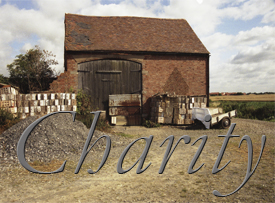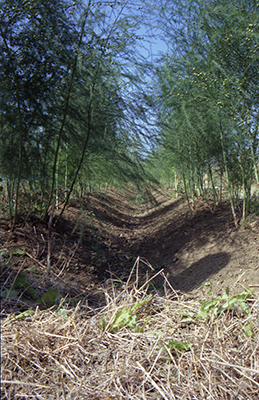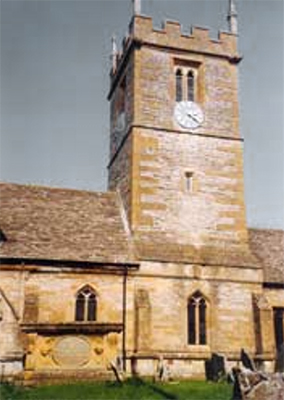




A Novel about Landscape and Childhood, Sanity and Abuse, Truth and Redemption
Paul Brazier ~ Longman’s Charity



The Story
Longman’s Charity ~ Synopsis
There was a Serpent in that Garden
MILTON, PARADISE LOST, BOOK IX
Landscape and Childhood . . .
Longman’s Charity is a story about a child–Paul Broadley.
The landscape is the Vale of Evesham
Paul’s father is a land worker and market gardener.
The countryside is the background, the environment,
in which the boy grows up.
It is also the one factor in his young life that keeps him sane.
Sanity and Abuse . . .
The boy is subject to sexual abuse–by his mother
(not his father)–between the ages of 7 and 13 years,
starting after the death of his grandfather whom the boy
valued above his parents and above everyone and everything else.
Violence and Intimidation . . .
This abuse, coupled with the violence and rows that his parents foist on each other, generates nervous and deeply psychological traits, inhibitions, in him: he represses the memories of this abuse; he is petrified and traumatised by the rows and violence. His father’s uncontrolled temper is matched by his mother’s scathing and belittling, contemptuous and disparaging tongue: his mother and his father are both matched
in the evil they can foist on each other.
Withdraw and Anguish . . .
Paul withdraws from normal interaction with his peers.
This troubles school teachers, social workers, etc.,
But they are lost as to why he is as he is, though the obvious reason is his father’s bad-
He is deeply traumatised . . .
This leads Paul to be admitted to an adult male ward in a mental hospital when he is thirteen years of age, where he observes fallen humanity in all its depravity,and perversion, and where he continues to witness
and be subject to abuse of sorts.
After his release . . .
He is defined by the local authority as
educationally sub-
which merely repeats the experience of the mental hospital.
Evil and Corruption . . .
There is therefore narrative about the landscape,
the market gardening small holdings, the hills, the vale, the glorious fecundity of God's creation, clothed by a pre-
There are also passages about school, church attendance (confirmation aged 10 years), land workers, and how he is pilloried, marginalized, stigmatized and avoided by children and adults around him.
There are also many passages which detail the rows,
the violence at home, passages relating the abuse he is subject to,
and the men he has to live with in Powick mental hospital
but also the art room there that provides a sanctuary.
Truth and Redemption . . .
The story concludes with a portrait of Paul several months after his return from the special school. He is stood early one morning, before dawn, the world locked in frost and ice, a cold February morn, overlooking the red barn and the copse that he has known intimately all his childhood
a mile from his parent's home.
In this leave-
Recognition . . .
This portrait also cites, briefly, how he moves on, leaves the vale,
goes to art college and university, then into teaching, but remains a confirmed celibate bachelor, then briefly describes
his conversion to Christ aged 26 years.
Realization . . .
Later, when Paul is called to formally identify
his mother’s dead, “suicided,” body
it is her hands he recognises above all else:
it is at this point that the sublimated memories
of the years of abuse he had been subject to as a child
begin to impinge on his conscious mind.
Therefore Longman’s Charity is about truth and redemption.
Longman’s Charity is essentially
an autobiographical parable,
and is in essence theological.
~Paul Brazier, March 2014
“The sky was clear, bright, sharp.
It was early March.
The air was cool, the frost had cleared, and the sun was strong for the time of year––
its light was bright, piercing,
but it gave no heat.”
“The land was bare. The trees were bare. A rabbit sat nervously twitching on the furrowed earth, looking, ever looking. A crow cawed from the nearby copse, startling the rabbit as though it expected something to swoop and tear its flesh with beak and claws. The crow cawed again. The rabbit shot across the field, hopping over the brown furrowed ridges, weathered down now by winter rains and frost.
The crow cawed once more. Then falling more than flying it flapped its way down from the top of the bare elm on which it stood, landing on the bare earth. It hopped clumsily over the soil to a stone. Picking up a snail from the earth in its beak it hopped its wide-
The boy had seen it all. He had seen the rabbit, he had watched it slowly, fitfully, making its way across the ground. Saw its nervous terror as the crow cawed. He watched its panic, sensed its fear.
Felt for it. The boy felt the same fear, often, fearing his
fellow humans . . .”
Fact and Fiction
“All the best stories are true”
Someone once said that all the best stories are true. When I shared drafts with a professional colleague, she dismissed the story as too impossible saying people are not like that, and things don’t work out like that, also, that women never commit abuse – only men.
The story of Longman’s Charity is true.
Fact or fiction: everything that happens to Paul Broadley in this story happened to me. The presentation of my sister, parents and grandparents is likewise accurate, factual; likewise what is presented of their personalities and motivations, their weaknesses and flaws is accurate, This is also so with regard to the people who exercised a profound effect on my childhood: power, status and authority – for example the doctors, social workers, and psychiatrists.
However, I have changed the names of characters, sometimes amalgamating real-
For example, the characters in Powick are all accurate portraits–though given pseudonyms. Some characters around Evesham are accurate portraits (for example, Chowskie’ – no one knew his real name). Others – for example Jim and Doris Beason – are a fictitious portrait drawn from accurate observations of around half a dozen real life characters that I knew. As such Jim and Doris are, I believe, typical of the rural working class Protestant market gardeners, often deeply Christian, who survived just above the poverty line, and as such exhibited a righteousness before God generated by their restraint, though they were not flawless. Such righteousness the wealthier market gardeners often lacked. Did the conversations between Jim and Paul happen? Yes, but not with “Jim”; the conversations were with a man who drove a black-
Why Parable – Why Broadley?
Longman’s Charity is therefore autobiographical but also parabolic: characters are renamed, in some cases combined, but the events are all factual. The key family, the Broadley's, is the family I was raised in. Why change the name? – because by resituating I could somehow distance myself from the events and try to present them, in literary form, objectively. The Prophet Nathan could expose King David to the truth of his actions by setting the king's adultery and the wasting of Bathsheba's husband in a parable. Therefore Nathan could identify a deeper level of truth than he could by merely stating the bare facts : such deeper truths are by their very nature theological.
Influences?
Nobody writes in isolation. The overriding influence throughout the writing of Longman’s Charity was veracity – fidelity to the truth, indeed working out what had happened all those years ago.
Were there influential writers–in terms of style and genre?
Yes.
There were four writers that inspired and influenced the style of the writing: two pairs––
Laurie Lee and Flora Thomson
Representative of the bucolic almost prelapsarian innocence of living in the English landscape, evoking a pre-
and
Thomas Hardy and Fyodor Mikhailovich Dostoevsky
Representative of the dark side of humanity, the no-
In theological terms Longman’s Charity
is a reflection of (and conforms to the eschatological
framework!) of Milton’s Paradise Lost.
There was a serpent in that Market Garden.
Evil comes from the rebel–the fallen angel . . .
Almost all those of my parents’ generation who knew me or were involved in this story are now dead. What is presented in this story should not be seen as a criticism of anyone, simply a portrait of fallen humanity, who, in trying to do good so often get it wrong, doing the evil they hate, who have the desire to do what is good, but cannot carry it out (Romans 7). I would confidently assert that Longman's Charity is theologically charged, perhaps in sweep, intention and meaning because it reflects a true understanding of the human condition and dilemma before God and the profound cry from humanity however corrupt and guilty, stained and broken, for forgiveness and redemption. If that cry is lacking or stifled then the result is despair – and all too often suicide.

Asparagus Stand

St Andrew’s, Hampton




© Paul Brazier ~ Ash Design, 2014
| Contents |
| The Psalms |
| Galleries |
| Links |